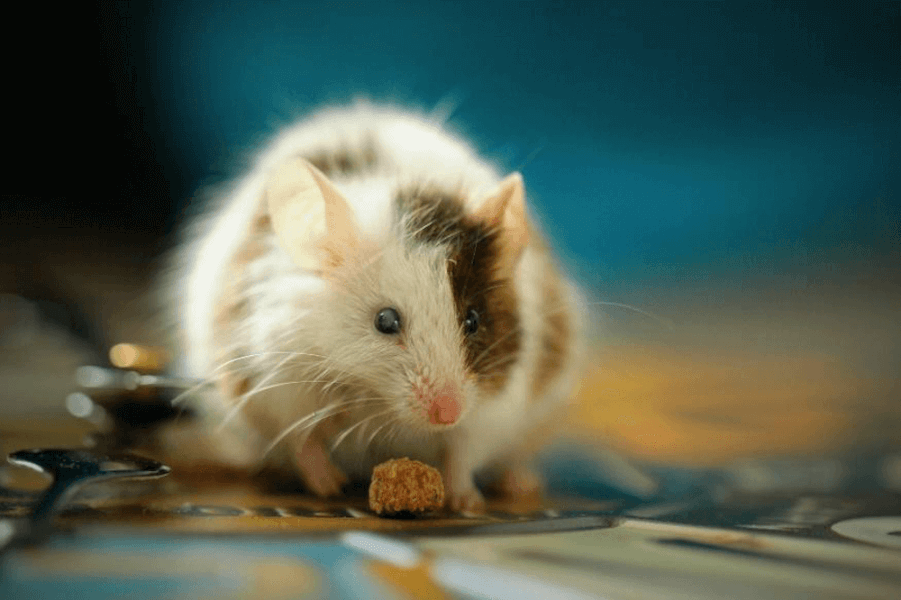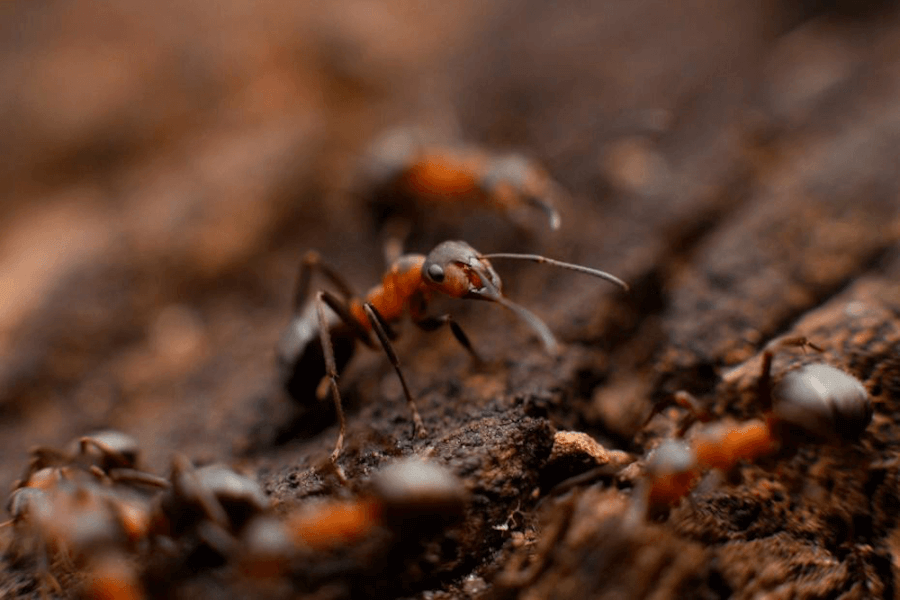If you understand the impact of weather on pest behavior and control, you can more effectively protect your home! Each element plays a big role in shaping pest populations, from temperature fluctuations to humidity levels. So, by unraveling these connections, homeowners can better equip themselves to tackle infestations proactively.
Impact Of Temperature
Temperature plays a big part in the impact of weather on pest behavior and control, affecting their activity levels and reproduction rates. In warmer temperatures, they tend to be more active, increasing the likelihood of infestations. Conversely, extreme temperatures can impact their survival, reducing populations.
So, if you understand these temperature-related effects, you can effectively deal with pests. For instance, focusing on preventive measures such as sealing entry points during hot weather can help deter infestations from entering buildings. Conversely, in colder temperatures, targeting indoor habitats becomes more effective.
Influence Of Humidity
Humidity significantly influences pest behavior, affecting their development and survival. For example, cockroaches, termites, and ants thrive in high-humidity environments, making them more likely to infest homes during humid seasons. Excessive moisture provides ideal conditions for them to breed and multiply rapidly!
Therefore, it’s necessary to control humidity levels indoors to deter their activity. Likewise, high humidity can exacerbate existing problems, leading to more significant infestations if left unchecked. So, if you notice a lot of moisture in your home, it’s best to do a pest inspection just in case.

Rainfall And Moisture
Rainfall and moisture significantly impact infestations, creating favorable conditions for them to thrive. Excessive rain moisture can lead to damp environments, attracting mosquitoes, termites, and rodents. After all, they tend to seek shelter and breeding grounds in areas with high moisture levels, increasing the risk of infestation.
Therefore, it’s necessary to address any water leaks or drainage issues around your home to minimize moisture buildup. For example, regularly inspecting your property for signs of water damage and addressing them promptly can help prevent infestations. Similarly, if you’re prepping for a new home, you need to know how to deal with moving in bad weather if you want to immediately notice the presence of pests and work towards eliminating them!

Wind And Air Currents
Wind and air currents play a big role in the movement and spread of infestation. Strong winds can carry pests over long distances, leading to infestations in new areas. Similarly, air currents can facilitate the dispersal of pest-borne diseases, posing health risks to humans and animals.
So, it’s smart to seal any openings or cracks in buildings to prevent infestations from entering through air vents or gaps in windows and doors. This way, homeowners can take proactive and, most importantly, effective measures to protect their properties.
Seasonal Trends In Behavior
Seasonal trends in pest behavior reveal patterns that homeowners should be aware of. For instance, ants and mosquitoes are more active during the warmer months. Conversely, rodents seek shelter indoors in colder seasons, leading to increased sightings. Understanding these seasonal fluctuations enables homeowners to implement timely control measures.
As such, simply by preparing for seasonal pest outbreaks in advance, homeowners can minimize the risk of infestations. Naturally, regular maintenance and inspections during these periods help identify and address issues before they escalate. Therefore, staying vigilant throughout the year and adapting your strategies according to seasonal trends is needed for solid results.

Weather-Responsive Methods
Weather-responsive pest control methods adapt to changing weather conditions to manage infestations effectively. For example, focusing on eliminating standing water sources can help prevent mosquito breeding during heavy rainfall. Similarly, adjusting bait placement during hot and dry weather can improve the efficacy of traps.
Therefore, by incorporating weather data into their strategies, homeowners can optimize their efforts! You can look into landscaping tips to deter pests naturally. Planting repellant herbs and flowers or creating barriers with mulch can discourage them from entering your property. From there, regular monitoring and maintenance of landscaping features can help identify and address troublesome areas.
Utilizing Technology For Weather-Based Pest Control
Utilizing technology for weather-based pest control offers innovative solutions to combat infestation problems effectively. Weather-tracking tools and apps provide valuable insights into upcoming weather patterns, allowing homeowners to anticipate potential outbreaks. By leveraging weather data, exterminators can also adjust their strategies accordingly, enhancing the efficiency of their efforts.
Integrating weather-based infestation control technologies into existing systems also streamlines the process of monitoring and addressing issues. For instance, automated alerts can notify homeowners of upcoming weather conditions conducive to infestations, prompting proactive measures. Lastly, advanced technologies such as smart traps and sensors enable real-time monitoring of pest populations, facilitating timely intervention.
Collaborating With Meteorologists And Pest Control Experts
Collaborating with meteorologists and pest control experts fosters interdisciplinary efforts to combat infestation problems effectively. Meteorologists provide valuable insights into weather patterns influencing pest behavior, enabling control professionals to tailor their strategies accordingly. By working together, they can anticipate and prepare for outbreaks triggered by specific weather conditions.
So, establishing effective communication channels guarantees timely information exchange, enabling proactive infestation management measures. For instance, meteorologists can alert exterminators about upcoming weather events conducive to pest activity, allowing them to implement preventive measures. Likewise, exterminators can provide feedback on infestation trends, assisting meteorologists in refining their forecasts.
Long-Term Strategies For Climate-Resilient Pest Management
Long-term strategies for climate-resilient pest management involve adapting to changing environmental conditions to prevent infestations. By implementing sustainable control practices, homeowners can reduce their reliance on chemical treatments and minimize ecological impact. For example, incorporating habitat modification techniques, such as sealing entry points and removing debris, creates a sterile environment.
In addition, promoting biodiversity in outdoor spaces helps maintain ecological balance and reduces their presence. As such, educating homeowners about climate-resilient management techniques empowers them to make informed decisions and take proactive measures!
Leveraging The Impact Of Weather On Pest Behavior And Control
With everything we covered, we know you can properly handle the impact of weather on pest behavior and control. Recognizing and adapting to these patterns can mitigate infestations more effectively and protect your home. Whether by adjusting tactics based on temperature fluctuations or monitoring humidity levels, you can maintain a pest-free environment!
Be sure to contact Gunter Pest & Lawn to start your service today. You can call us or use our contact form.
Be Sure To Check Out Our Services:
Termites — Commercial Pest Control — Residential Pest Control — Bed Bugs








